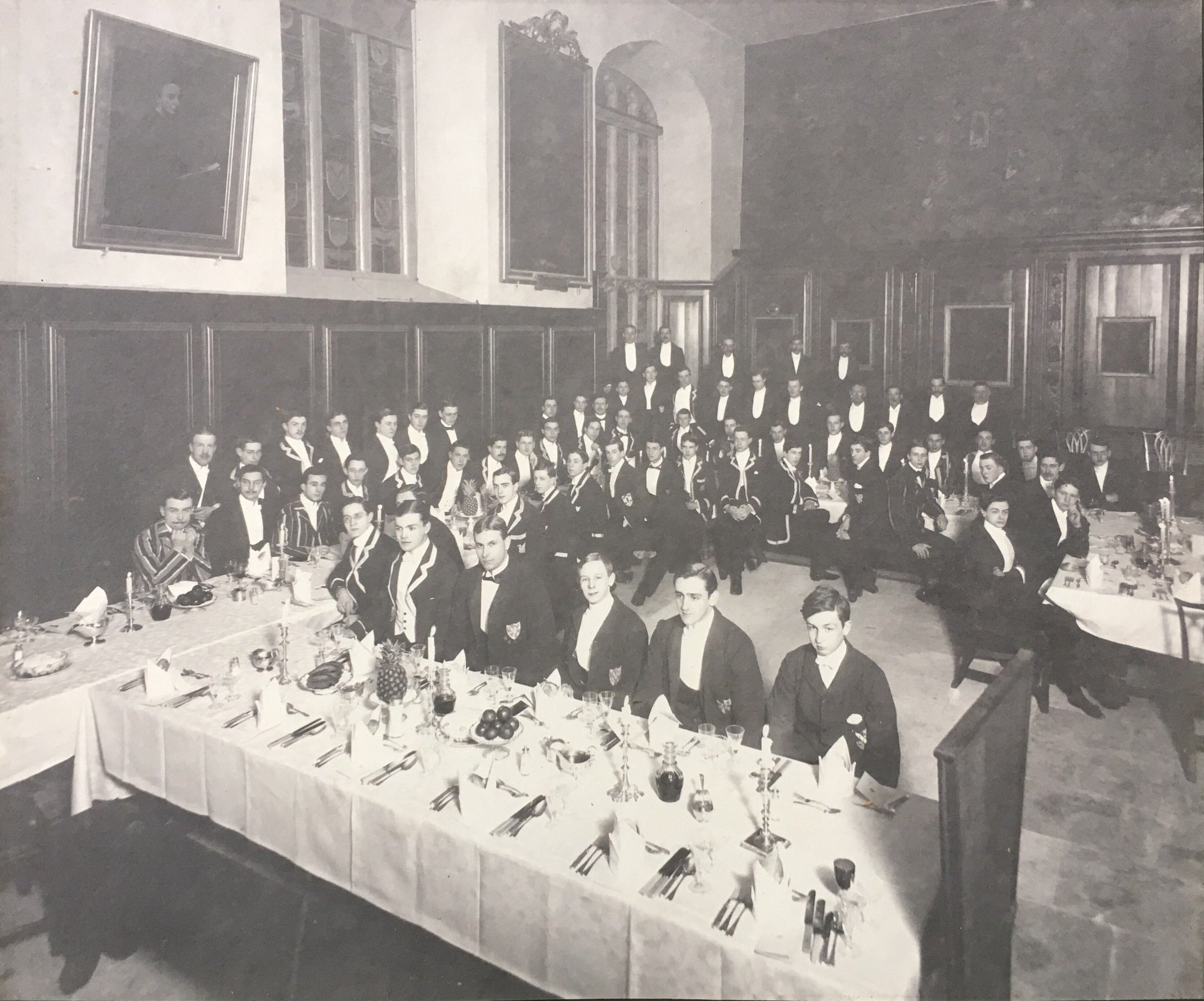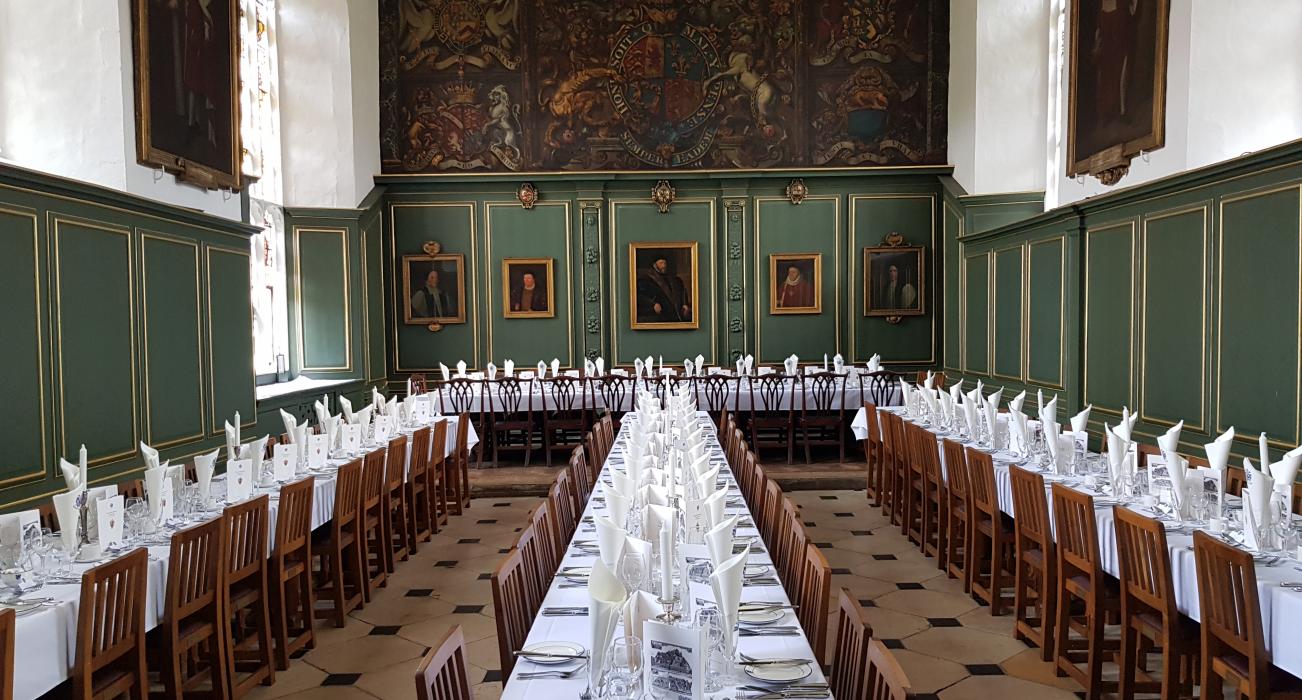The 500th Anniversary of Magdalene College Hall
The Hall has been a focal point of College life since it was built in 1519 under the patronage of Edward Stafford, 3rd Duke of Buckingham. The building appears to have changed little for the next sixty years. During this period, in 1555, the College Statues were drawn up; these stipulate that meals must be eaten in Hall unless the Master permitted otherwise. In addition, lectures were to be ‘given in the Hall of a morning between the hours of six and seven o’clock.

Magdalene College Hall, Sturgis Album, 1907-1910
Significant change occurred in the 1580s under Thomas Nevile (Master, 1582-1593). One Giles Bickmore was paid the huge sum of £10-3s-4d ‘for colouring’ the Hall walls in 1585. In 1586, Edward Lucas paid £13 for wainscoting the Hall and an additional pound for his Arms to be added. The College Accounts for the same year show that “elme trees in the backside commonly called the grove”, possibly the area which is now the Fellows Garden, were sold in order to fund the ”making of a great lover” – a louvre for ventilation - in the Hall.

Magdalene College Hall, c1905
This architecture formed a backdrop for daily life during the seventeenth century, although, as College records show, occasionally there was something more dramatic as well: in April 1636, Charles Gale played a prank on six other students who were dining at High Table. He tried to bribe a young servant to go into the Hall and read the wrong grace, but the boy refused. Instead, another student, Theophilus Markham, joined in, insultingly turning his back on High Table as he read an incorrect grace. When the prank was ignored, Charles Gale resorted to name-calling the other students as “very absurd fellows”. However, when the insult was turned on him, Gale exclaimed, “I will box”, and the episode ended in a bout of fisticuffs.
An overhaul of the building occurred in 1714, when the roof trusses, which had been visible from below, were covered by a flat ceiling. In addition, the Hall was given a new floor, glazing and pine panelling. The staircase and gallery leading to the Senior Combination Room were also inserted. This work cost the grand sum of £265. The Earl of Suffolk, the College Visitor, sent his own workmen to paint his coat of arms as part of an armorial display above the dais; this still survives today.
By Dr Matilda Watson, College Archivist
This article first appeared in Magdalene Matters Issue 49
